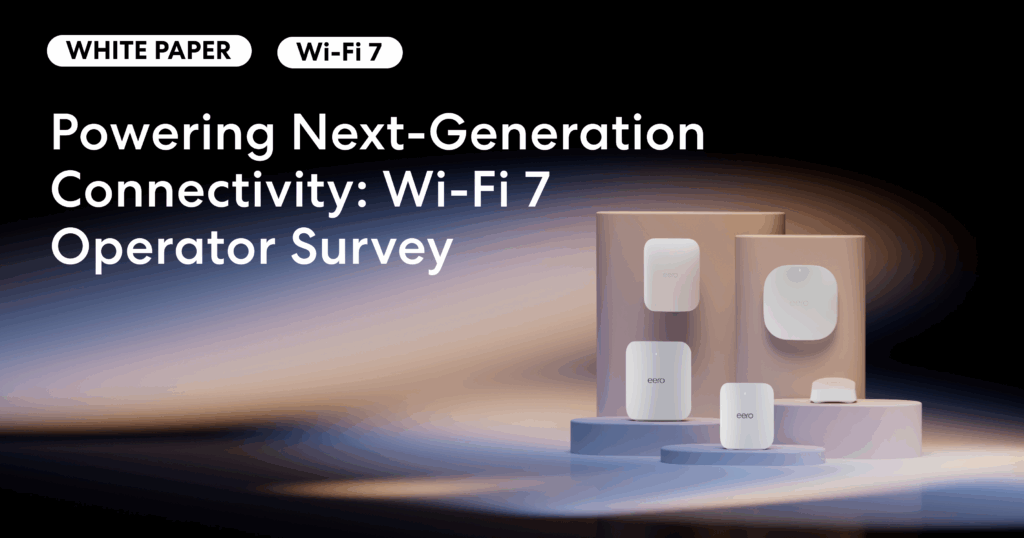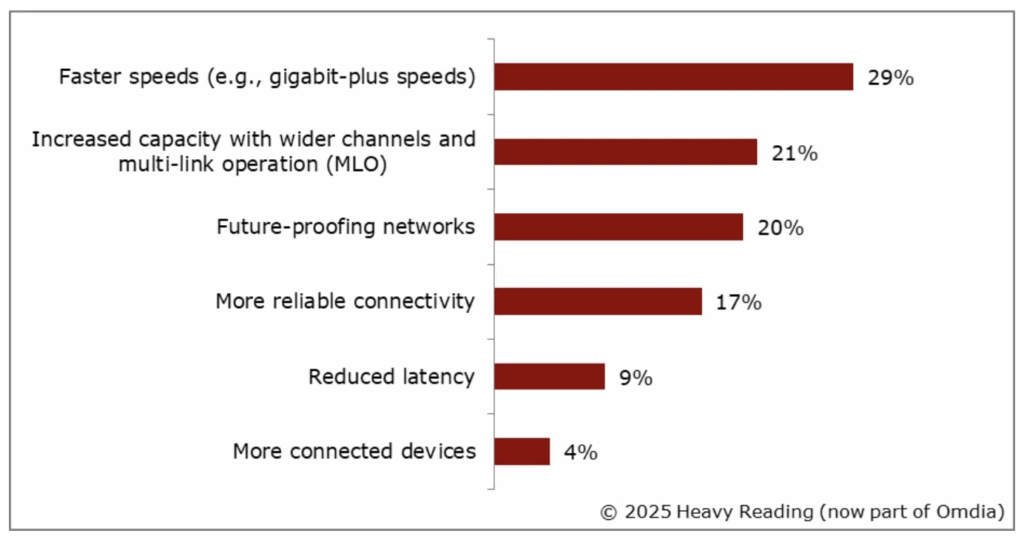
This guest post was written by Ruth Brown, Principal Analyst — Mobile Networks at Heavy Reading (now part of Omdia). The corresponding white paper is brought to you by Heavy Reading, eero, and Qualcomm Technologies.
Internet connectivity has evolved from a luxury to a critical utility. Users have rising expectations — they want higher performance, reliability, quality of experience (QoE) and consistent wireless coverage in all their spaces. These demands create an opportunity for operators to provide value beyond basic connectivity that also delivers a competitive advantage, boosts customer satisfaction and reduces support calls.
Operators need a strong Wi-Fi service offering that complements their high speed broadband access services. Central to this vision is a high performance, resilient wireless backbone for the enterprise/home network that can maintain quality of service across device types and applications. Operators can leverage new Wi-Fi technology to create a proposition that supports more than speed alone.
The latest wireless standard, Wi-Fi 7, brings faster speeds, better support for high bandwidth applications and more efficient data transmissions, improved performance in congested environments and low latency for real-time responsiveness. The technology is a major leap forward, especially for real-time applications like immersive video and collaboration tools, video conferencing and gaming.
Service providers have already started to deploy or expect to deploy Wi-Fi 7 service plans within 12 months, according to the new Heavy Reading (now part of Omdia) Powering Next-Generation Connectivity: Wi-Fi 7 Operator Survey, which is sponsored by eero and Qualcomm Technologies. ISPs must identify the most important Wi-Fi 7 capabilities to promote their service plans to customers effectively.
The full report is available for download here.
Wi-Fi 7 value proposition — more than speed
As discussed in the white paper, “faster speeds” is still ranked as the leading capability of Wi-Fi 7 (29%), followed by:
- “Increased capacity with wider channels and multi-link operation (MLO)” (21%)
- “Future-proofing networks” (20%)
- “More reliable connectivity” (17%)
- “Reduced latency” (9%)
- “More connected devices” (4%)
Speed is a well-understood metric, and Wi-Fi 7 delivers considerable speed improvements over previous generations. But demand for better device and application QoE, reliability and personalization emphasizes many of the other new Wi-Fi 7 capabilities. Operators acknowledge the value of MLO in achieving this. MLO increases the efficiency of tri-band support (operating across 2.4, 5 and 6GHz bands) and enables devices to use multiple bands simultaneously or dynamically switch bands to avoid wireless interference, lower latency and increase spectral efficiency.
What value proposition is most important when promoting the capabilities of Wi-Fi 7 service plans to your customers?

n=90
Source: Heavy Reading (now part of Omdia), June 2025
Competitive service offerings must be future-proof
Future-proofing home network investment is essential to operators to maintain competitive and relevant service offerings. According to this survey, a fifth of operators expect to support older Wi-Fi standards for up to five years. With equipment typically remaining in service for extended periods, operators must focus investment in products that evolve and incorporate new capabilities over time. Key considerations include:
- Hardware design: Equipment must incorporate the latest Wi-Fi technology and standards while addressing network readiness, memory capacity, storage space and power efficiencyto ensure future extensibility. Design must carefully balance advanced technical capabilities against cost. In addition, equipment design must account for optimal placement in areas with strong Wi-Fi coverage to ensure a positive customer experience.
- Software and service platform: Customers want secure and customizable experiences. For operators, the ability to introduce new services and subscriptions as well as upgrade and optimize platforms throughout their lifecycle is crucial to protect against emerging security threats and deliver new value-add.
- Operational efficiency: Developing more reliable equipment directly addresses efficiency by reducing setup complexity, minimizing complaints and decreasing the need for engineering callouts. Operators should leverage emerging technology and the expanding role of AI to support the full equipment lifecycle from commissioning to diagnostics and troubleshooting.
Equipment that can deliver long-lasting service opportunities and future expansion capabilities will significantly strengthen customer broadband service offerings. Operators must leverage Wi-Fi 7 advanced capabilities to deliver value and a premium customer experience. However, customer understanding of advanced features like MLO remains immature. As a result, marketing must highlight understandable Wi-Fi merits (e.g., unbreakable service, no dead zones, easy setup, online safety and security, better gaming, etc.).
Operators will, of course, continue to market simple speed upgrades. However, as more applications and use cases demand consistent, low latency performance, operators have an opportunity to highlight the value of Wi-Fi 7 beyond speed alone. By communicating these benefits, operators can differentiate their service and establish stronger value propositions.
The full white paper is available for free here.

You must be logged in to post a comment.